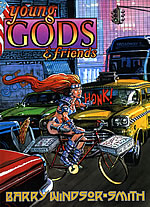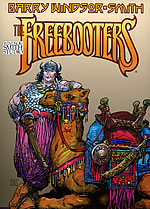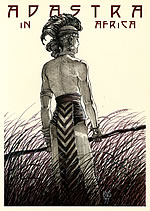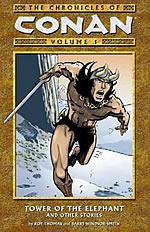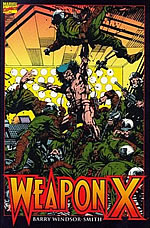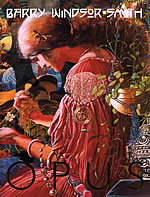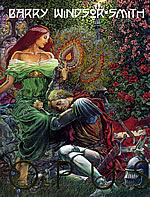Barry Windsor-Smith:
Comics Registered Genius
Somewhere in a dusty archive in a Washington, DC basement are filed three or four pencil drawings by a twenty-something Londoner named Barry Smith. In 1970, the United States Immigration Service under ‘Tricky’ Nixon drastically reduced their quota of British citizens allowed to emigrate. The only way you might qualify was if you were judged to be exceptional in science or art. Based on sketches he submitted to them, Barry was classified a ‘registered genius’ and so America, and American comics, finally became his new life.
On the coat-tails of Gibbons, Moore, Bolland and the 1980s full-scale transatlantic Brit invasion, these days British creators take it for granted that they can work in Britain across the pond. Those opportunities never existed before Smith paved the way in the early Seventies. Back then how far would you go to break into Marvel Comics?
Would you drop everything aged 19 and fly out to New York along side your mate Steve Parkhouse, with hardly any money between you and only an encouraging response from Stan Lee to your Kirby-copyist art samples? Stan never expected this long-haired cockney to show up on Marvel’s Manhattan doorstep, hungry for the chance to draw a real Marvel comic. Such was his determination, illegal alien Smith somehow scraped by in the Big Apple through the summer of ‘68, even sleeping rough, so he could make his debuts on X-Men, Daredevil, Nick Fury and Avengers. Being given 24 hours by Immigration to leave the country only convinced him to try for a Green Card and get back.
Stranded back in London, it all went worryingly quiet until miraculously, Barry got the dream opportunity in 1970 to draw his first regular book, Conan The Barbarian.
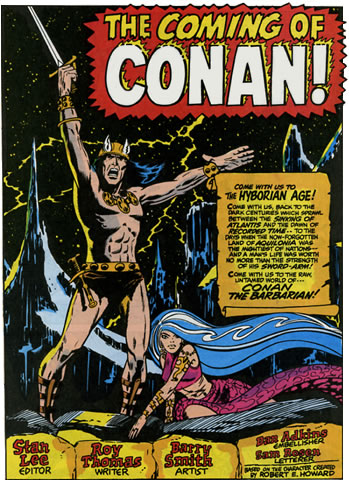
It helped that he was cheap, cheaper than John Buscema who was writer Roy Thomas’ first choice. Currently Conan is enjoying a strong come-back from Dark Horse, so to coincide with this, they are reissuing the Marvel series from the start in paperbacks for the first time. Probably for copyright reasons, the original comicbook covers are not reprinted, and Digital Chameleon’s colouring adds the computerised sheen punters expect, but the stories are what count.
The magic is to see how Smith’s skills contribute more issue by issue, not just his developing style inspired by Art Nouveau and Pre-Raphaelite ideas, but taking on title lettering, colouring and eventual co-plotting. He recalls, "It was a very intense period for me as a practical novice trying to grasp drawing, staging and story-telling, and I was learning my craft inch by inch right in the public eye."
In these reprint editions, Thomas’ commentaries credit Smith for introducing atypical sequences, from the shock of Conan’s nose sliced by a spear to the lyricism of the barbarian watching a seagull’s flight as he contemplates his destiny. Call me old-fashioned, but I find these stories, notably the later ones, stand up well re-reading them over 30 years later, perhaps because for both writer and artist the sword-and -sorcery genre was virgin territory, ripe for discovery.
Smith admits to being his own harshest critic and the more confident and demanding he became of himself, the more unsatisfying he found working in the Marvel method and under the Comics Code. From 1974 he quit comics to helm his own publishing company, Gorblimey Press. Much as I admired his prints, they were out of my price range and I longed to see more of what he did best - comics.
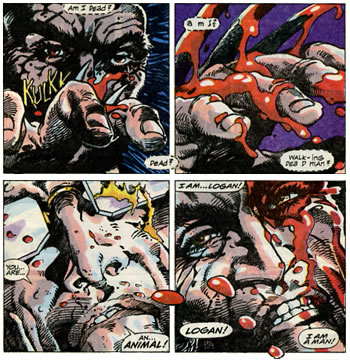
Ten years later, Smith eased himself back into comics by finishing Machine Man for Herb Trimpe, before trying various Marvel projects, as artist and increasingly as writer too. Like Alan Moore, Smith has a knack for untapping characters potential. Of these, the collected Weapon X stands out to me, not so much as a revelatory ‘origin’ of Wolverine but as a damning portrayal of inhuman scientific experimentation and the strength of will any of us need to survive. At the time, Smith was in recovery himself from an accident and his own battle seems to have informed the visceral physicality on every page, the texts of thoughts and speech sliced and fractured across the panels.
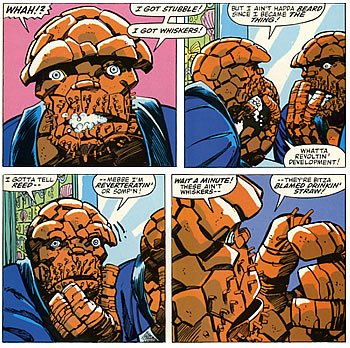
Smith also revealed a brilliance at comedy writing on a trio of tales starring The Thing, but only one saw print. "I was drawing Kirby characters as written by a British playwright like Tom Stoppard. The series was surreal, adult, and darkly humorous in a way that commercial American comics just can’t be." Eager to push the envelope, he had other proposals vetoed. Concepts for the Hulk’s childhood traumas - uncannily reminiscent of Ang Lee’s movie - may surface instead as a Vertigo graphic novel, The Monster, while a rejected Storm scenario became Adastra In Africa for Fantagraphics.
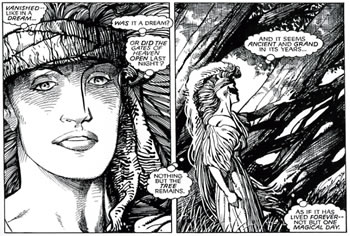
Away from Marvel, at Valiant and Malibu from 1991-95, Smith shone brightly, but briefly, on a revisionist Solar: Man Of The Atom. Yet none of his other serials - notably mismatched double-act Archer & Armstrong and the toothy Rune - look likely to be compiled into graphic novels.
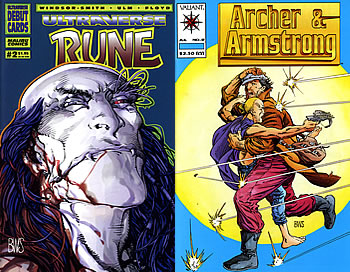
His renewed optimism surrounding the monthly creator-owned, triple-feature showcase Storyteller for Dark Horse in 1995, soon came up against the harsh realities of market forces resistant to its oversized format and adult sophistication. Having seen it axed after nine issues, Smith was broken and ready to quit comics for good.
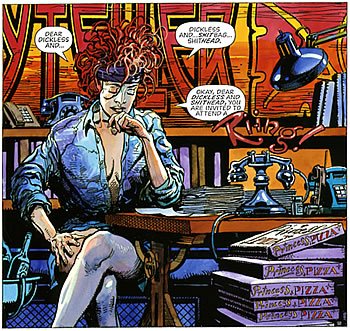
Luckily, Fantagraphics have now released Young Gods & Friends, his sexy and hilarious space opera, as the first of three glorious hard-backs which continue with The Freebooters and Paradoxman. As well as all the Storyteller material there is an outrageous new 25-pager, starring a Princess Adastra story, who is now running a New York pizza business, plus tantalising unseen chapters and further pages from 2001 when he tried to resume the story. Struggling at this, Smith opted instead to wrap up all three serials by inviting his colourful casts to meet at a surreal ‘going away’ party.
Even here, in his deepest disappointment, Barry can find the wit and artistry that confirm him as a genius which this medium should never lose again.
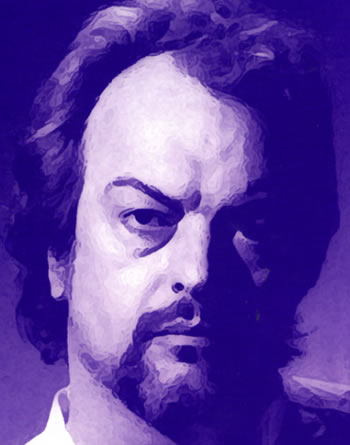
The original version of this article appeared in 2004 in Comics International, the UK’s leading magazine about comics.













